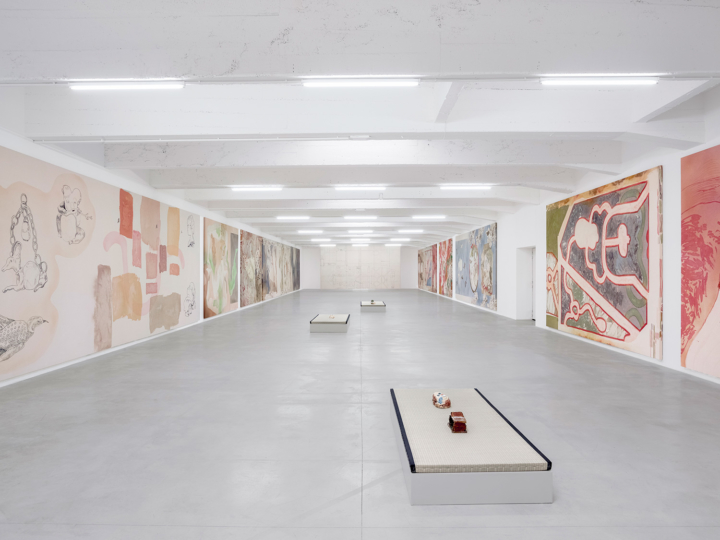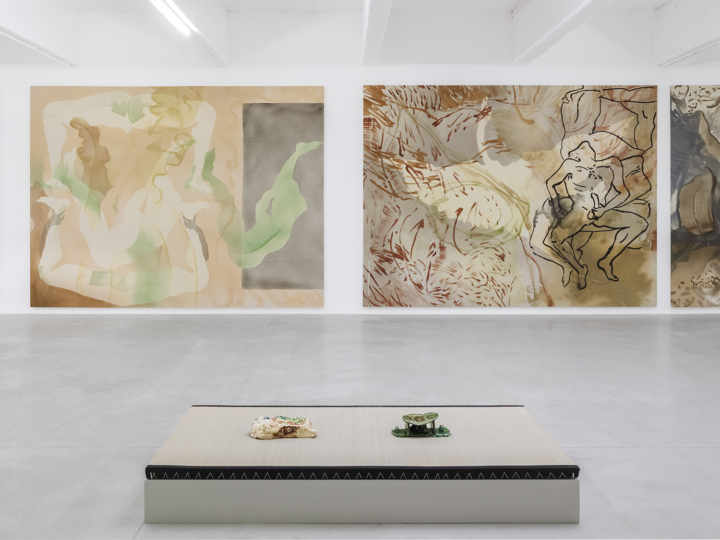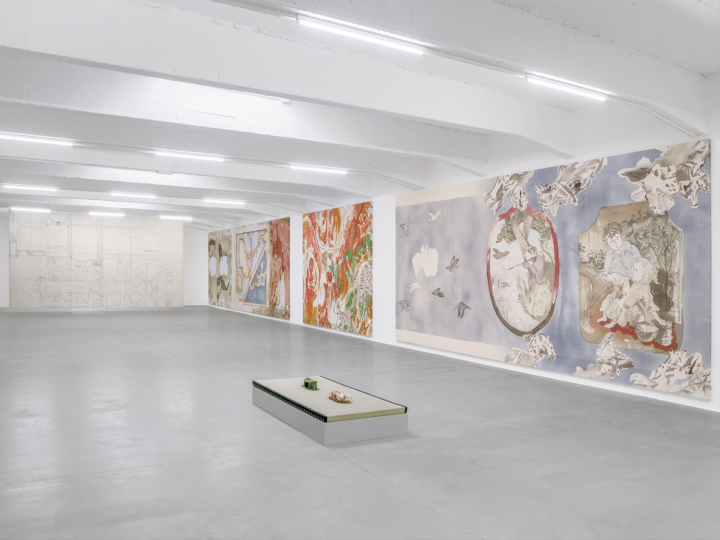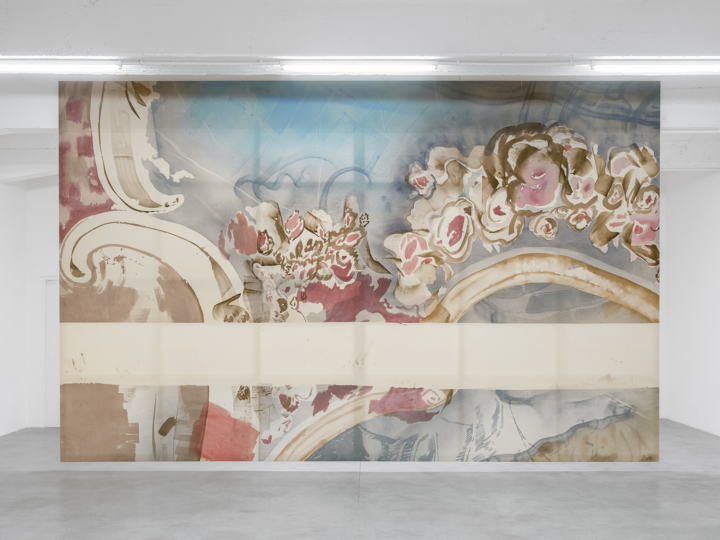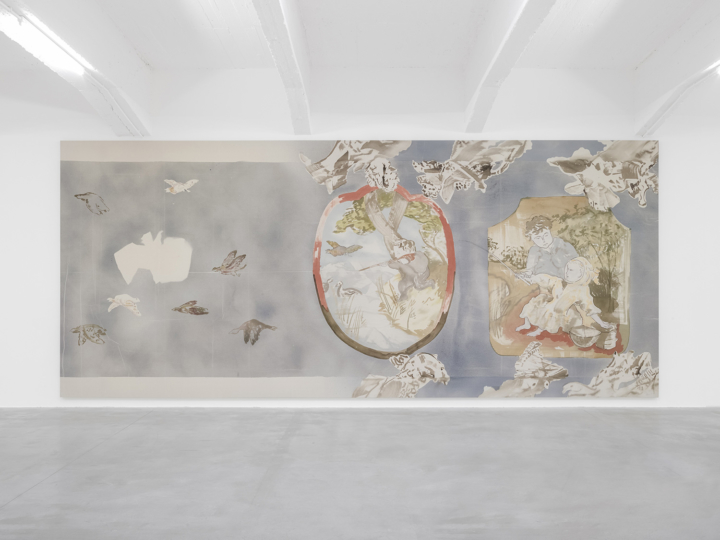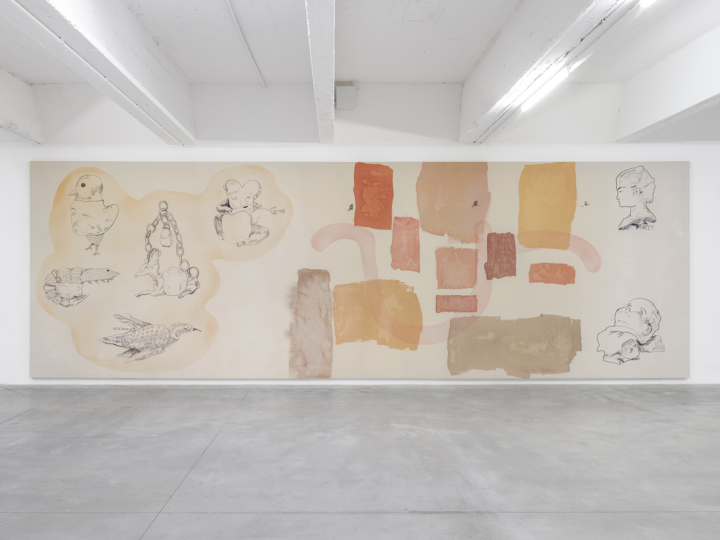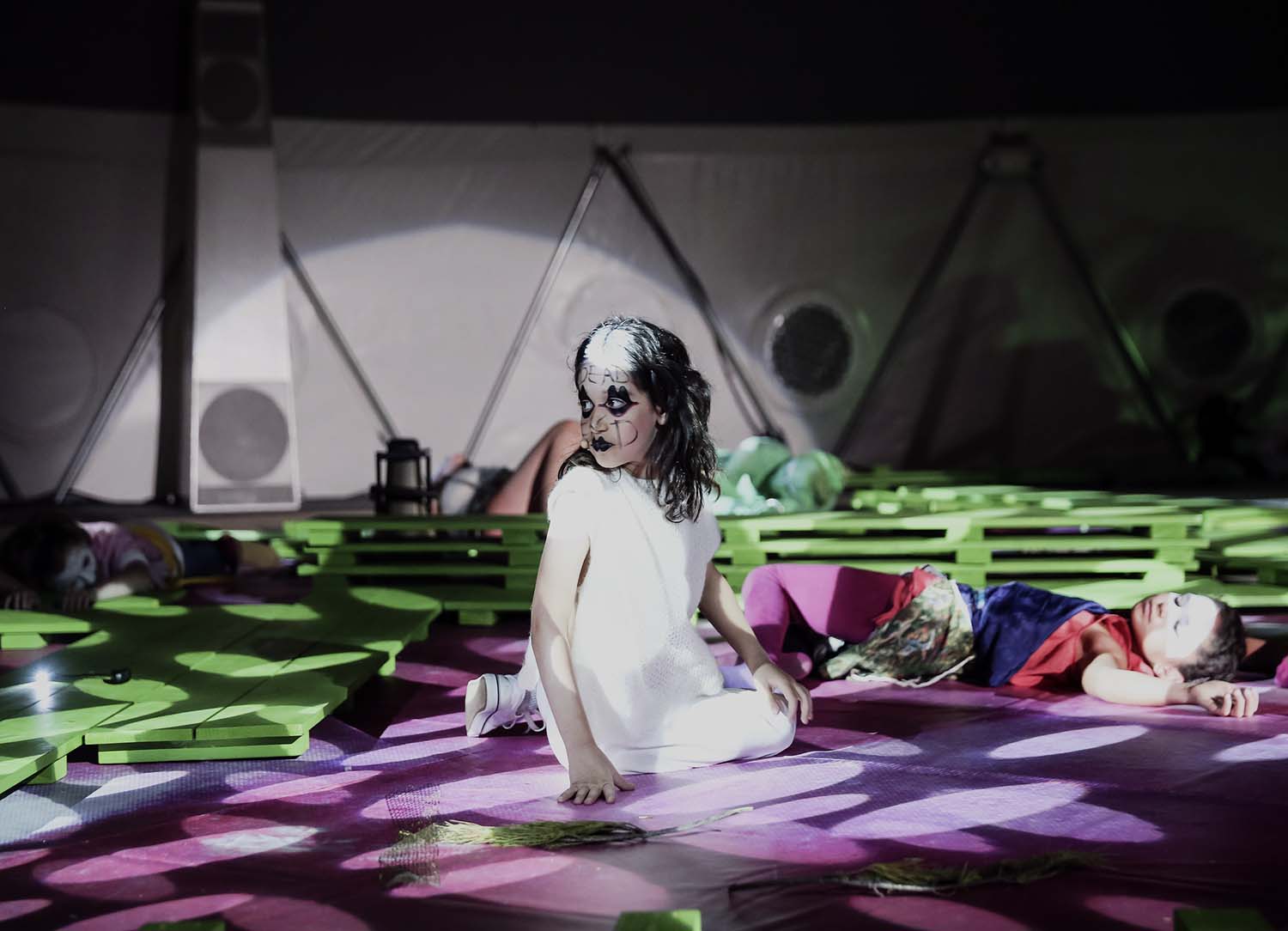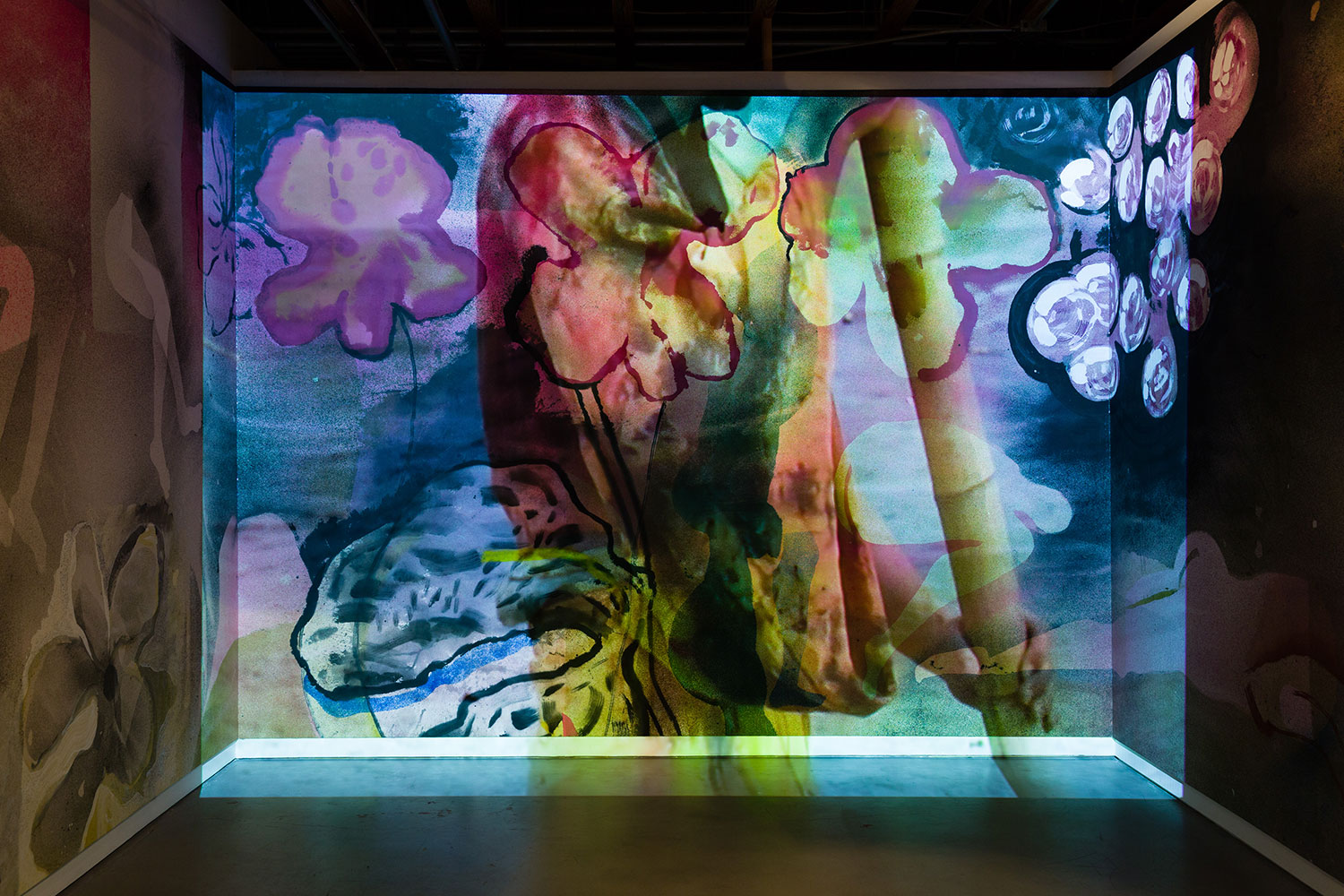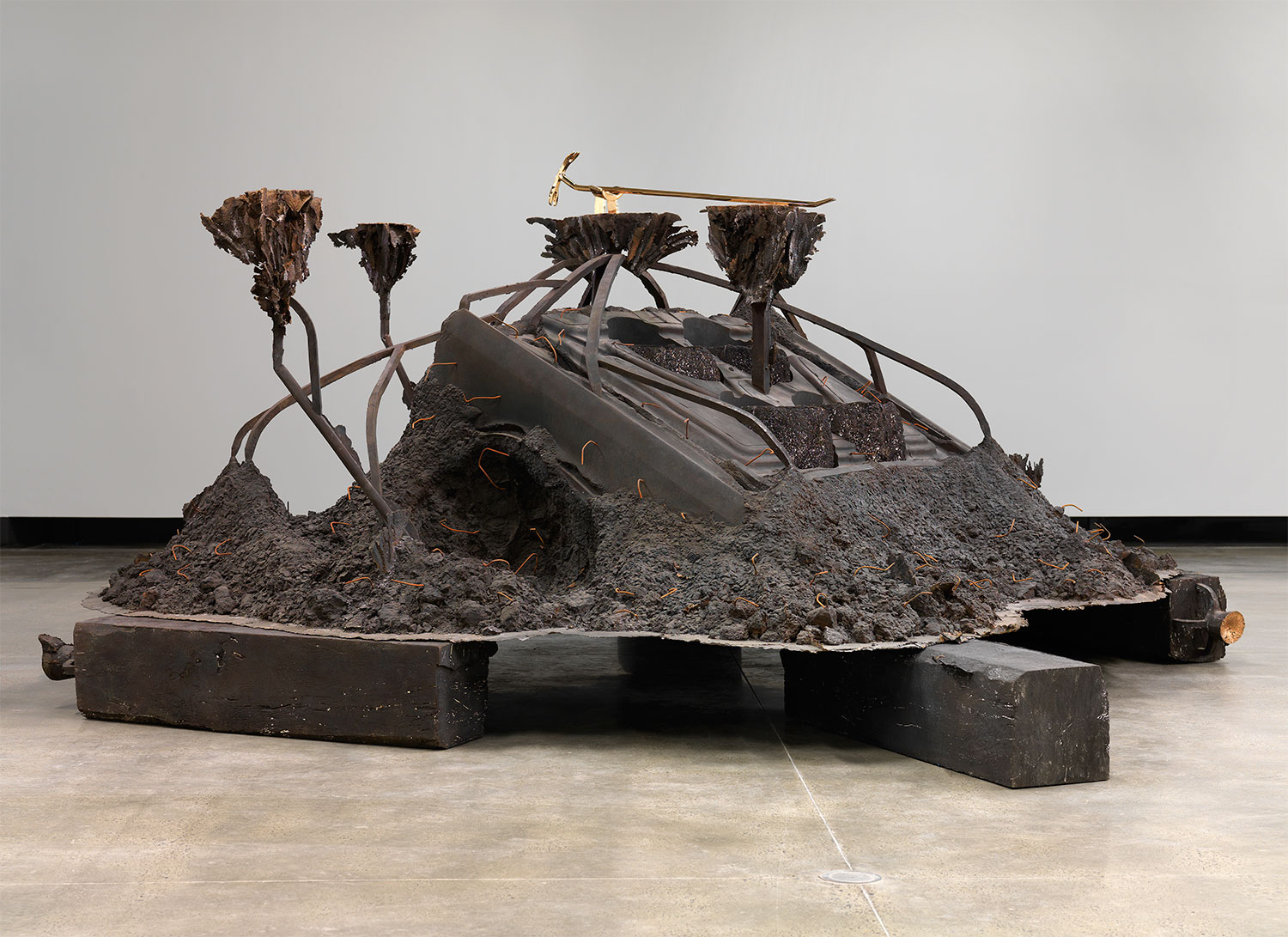Matthew Lutz-Kinoy’s solo exhibition at Le Consortium conflates two places far away in time and space: New York’s Frick Collection, opened to the public in 1935, and the Château de Bellevue, erected in 1750 on the outskirts of Paris for Louis XV’s mistress Madame de Pompadour and demolished seventy years later. Lutz-Kinoy’s combo, however, is not purely gratuitous; it has been drawn through the figure of François Boucher, the French Rococo painter who was a protégé of Madame de Pompadour (and indeed decorated her private rooms at the château), and whom Henry Frick voraciously collected.
Lutz-Kinoy’s embrace of the dense ornamental language of the Late Baroque develops into a journey — or better, a promenade — through modes of representation. The artist presents thirteen large-scale paintings and a collection of ceramic objects shown on tatami-cum-plinths. The paintings cover almost the entire wall surface of the single room hosting the exhibition, wrapping the space in a continuous decorative shell. Their subjects include: naked male bodies (either entirely drawn or rendered as silhouettes), flower motives, architectural plans of gardens (indeed, of the park surrounding the Château de Bellevue), color fields, pastoral vignettes involving infants (sometimes quoting Boucher’s paintings in the Frick Collection), trinkets in the shape of exotic animals, gestures reminiscent of the most abstract landscapes of the Chinese literati, and so on.
Because of their enormous scale, many of the canvases were partitioned; their fragmentation, however, enhances the viewer’s experience, echoing both the Rococo affinity for asymmetry and the maze-like design of the giardino all’italiana. The painterly surface becomes itself a garden, a place where the artist’s visual memories are triggered by the cyclicity of seasons and grow into inventions; where the figure-ground optics of figurative painting meet the theatricality of nature mastered by man; where harmony is achieved through extravagance. Standing before the many bodies populating these paintings, it is hard not to translate this agenda to gendered identities; and, in fact, as in Boucher’s bucolic scenes in which children are ambiguously depicted carrying out adult tasks, Lutz-Kinoy’s males — often captured in luscious poses — blend with the exquisite queering function of decoration.

